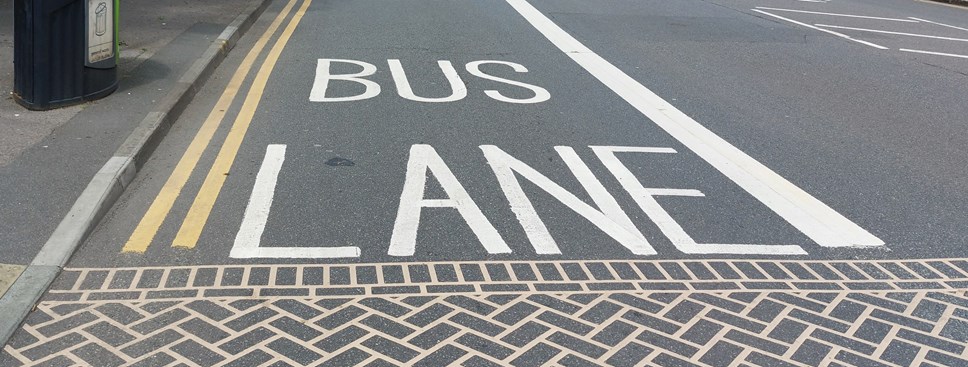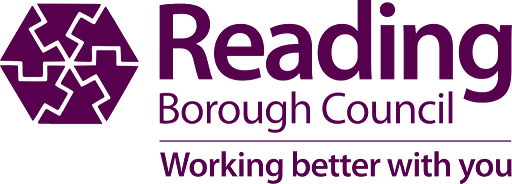
Have your say on proposals to make travelling by bus in Reading quicker and more reliable
- Next phase of the Council’s two-year, £26 million-pound investment to improve Reading’s bus service and bus infrastructure
- Ambition to make travelling by bus in Reading faster with fewer delays
- Six new bus lanes earmarked at key locations
READING COUNCIL is inviting people to have their say on proposals for six new bus lanes in the borough, as part of its ambition to make travelling by bus in Reading quicker and more reliable.
The proposed enhancement to Reading’s bus infrastructure is the next phase of Reading’s £26 million bus investment which aims to attract new bus passengers to even faster, more reliable and better-integrated bus services in Reading.
The plans for bus lane enhancements follows on from the launch of a new value for money bus ticket – the ‘Reading All-Bus,’ earlier this month, which allows passengers to use several bus companies including Reading Buses, Thames Valley Buses, Arriva and Thames Travel with the same ticket in the Greater Reading area.
As well as speeding up bus services, the new bus lanes will provide a safer shared space out of the general traffic for cyclists and provide quicker access for taxis and emergency vehicles.
The proposed bus lanes include:
- A329 Oxford Road - Outbound bus lane between Zinzan Street and George Street
- A329 Oxford Road - Outbound bus lane between Pangbourne Street and Norcot Junction
- A4 Bath Road - Outbound bus lane from Circuit Lane to Granville Road
- A327 Southampton Street - Inbound bus lane from Pell Street to The Oracle roundabout
- A4 London Road - Inbound bus lane between Sidmouth Street and London Street
- A4 London Road - Inbound bus lane between Liverpool Road and Cemetery Junction
The Council is seeking views on the initial scheme proposals before any decisions are taken on whether to proceed and more detail plans are produced.
The consultation is open from today, Friday 19 May for 4 weeks ending on Friday 16 June.
You can have your say online at: www.reading.gov.uk/bus-lanes
For more information or alternative formats, email transport@reading.gov.uk
View the proposed bus lanes on the Active Travel Google Map here (highlighted in red): https://www.google.co.uk/maps/d/edit?mid=1GMd2yd6lK7xb9xyn2_V5Y3wz469BJ7w&usp=sharing
Following the consultation, feedback will be assessed and detailed designs developed. There will then be a further consultation on the Traffic Regulation Orders, followed by a report on the final designs later this year.
Councillor Tony Page, Reading Borough Council’s Lead Councillor for Climate Strategy and Transport, said: “Successfully securing £26 million funding to improve Reading’s bus service now sets us on an exciting journey to making our already excellent public transport network one of the best in the country. Hot on the heels of us launching our new value-for-money ‘Reading All-Bus’ day travel ticket, these latest proposals further enhance our ambition to make travelling by bus in Reading easier, cheaper, quicker and more reliable.
“Prioritisng bus travel will benefit not only our transport network and current and potential bus passengers, but also for our environment. If more people choose to travel by bus this will result in reduced carbon emissions, improved air quality, health and wellbeing. Bus services, including community transport and school services, provide a vital lifeline for many people and access to opportunities such as education, training, employment, essential services and social events.
“Reading already has an extensive bus network which is well used by residents and visitors. However, bus services do suffer from delays as a result of traffic congestion, particularly at peak times, so there is a need to introduce greater priority for buses to improve services for local residents.
“We do appreciate any major change like this to Reading’s road infrastructure will generate mixed opinions, and that is why we are keen to stress no decisions have been taken and we are keen to gather as much feedback as possible on the six new bus lanes we’ve proposed. I urge people to look at the proposals in more detail and have their say.”
As well as outlining plans for investment in bus fares which extend beyond borough boundary lines to cover greater Reading, and for new bus lane infrastructure, the plan is for number of future ambitions to make bus services in Reading even better. These include:
- Extensions to the Buzz 42 service and South Reading services;
- Developing the Park & Ride service to the Royal Berkshire Hospital and University, as well as enhancing Mereoak Park & Ride itself;
- Bus information and passenger safety improvements, including better bus shelters and Real-time passenger information displays;
- Further phases of the South Reading MRT scheme on the A33 to speed up journey times between Mereoak P&R and the town centre;
- Giving passengers more of a say through the creation of a ‘Passenger Charter’.
Further information is available at www.reading.gov.uk/BSIP
Notes to editors
Reading Borough Council was one of 31 local authorities across the country to successfully bid for Department for Transport funding to develop and deliver its Bus Service Improvement Plan (BSIP), which has an integral role to play in helping Reading towards its net-zero carbon target by 2030 by encouraging more people to travel by bus.
Reading received the third highest funding award in the country (per head of population) – with the majority of areas unsuccessful in their bids.
Reading’s Bus Service Improvement Plan was drawn up early last year and is a blueprint for improvements and major investment in Reading’s bus services. It can be found at https://www.reading.gov.uk/BSIP and has been prepared with the active engagement of all local bus operators, including the Council-owned Reading Buses, and all neighbouring local authorities to the Greater Reading urban area.
The National Bus Strategy was published in March 2021 as part of a £3 billion funding package. It sets out how the Government intends to deliver on its commitment to achieve ambitious and far-reaching reform of the bus services sector. The strategy requires each Local Transport Authority (LTA) to produce a Bus Service Improvement Plan for their area. It also requires all transport authorities, such as Reading Council’s, to establish Enhanced Partnerships as a key element with local bus operators.
Reading’s BSIP was drawn up in early 2022 after the Government committed to investing in local bus services to help patronage recover from the reduced levels of usage as a result of the ongoing Covid pandemic.
Council’s wider transport strategy to create realistic and affordable travel alternatives, improving air quality and building towards our net zero ambitions by 2030.
